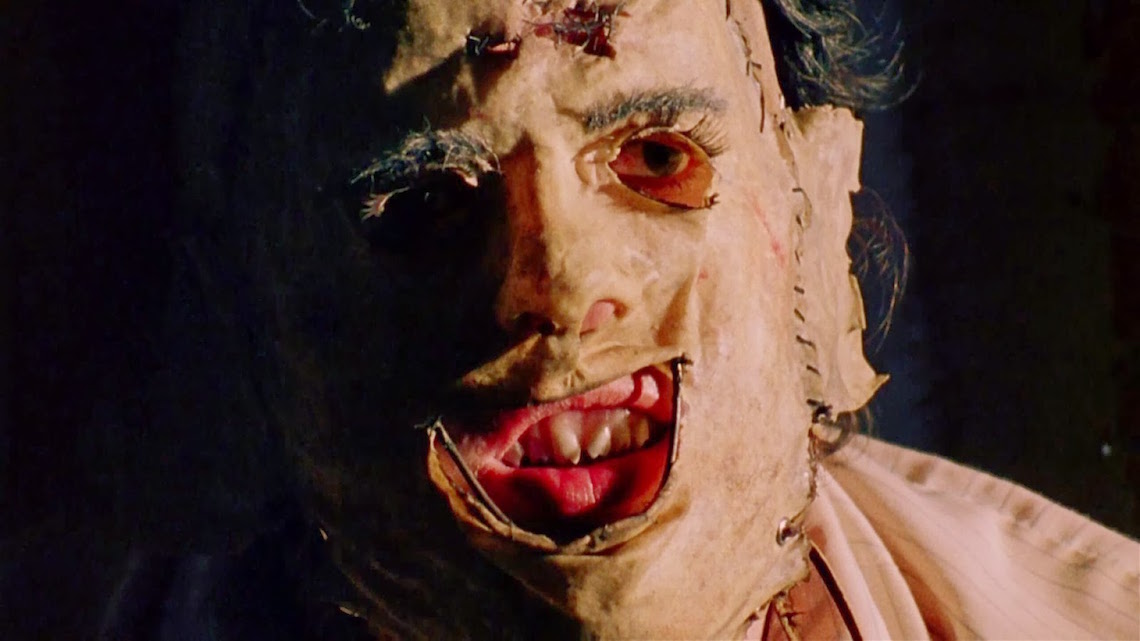One prevalent element in the horror narrative is that of the monster. Such monsters are the physical embodiments of our fears and they often portray ‘otherness’.
With the emergence of disease, economic disaster, natural devastation, and science innovation, society’s fears evolve and with it, the horror genre and the monster.
My fascination with horror began when I was a child following a haunting yet enjoyable viewing of From Dusk till Dawn (1996). Not the most appropriate considering the film is extremely violent but it rooted in me a deep love of the genre and the monsters of the screen, be it creature or human.
So why are we both afraid and fascinated of the monster?
Night of the Living Dead (1968)
The ‘living dead’ of George A. Romero’s ground-breaking horror film shocked viewers. Shot in black and white, a group of strangers find themselves trapped inside a farmhouse whilst the reanimated dead, or otherwise known as ghouls, roam outside threatening to eat them all. Filmed in an ordinary location, with unknown actors, the grainy footage gave the horror a genuine feel. There are lots of discussions on whether Night of the Living Dead is the origin of all zombie films, although the term ‘zombie’ is never used in the movie. Many critics praise it for being an innovative success, being the first to see a little girl eat her father and breaking the barrier between life and death, the ‘walking dead’ era began thereafter.
See also, [REC], Dawn of the Dead, 28 Days Later, World War Z, Resident Evil, and Warm Bodies.
The Exorcist (1973)
Demon possessions are spine-tingling tales influenced by religious notions that send chills running through even the non-believers. The Exorcist sees Regan, a young girl acting strangely from a suspected possession, so her mother seeks the help of two priests to cure her. Chilling scenes begin with Regan peeing herself in front of guests where she tells her mother’s friend, who is an astronaut, ‘You’re going to die up there’. It sets the tone for an unsettling demonic possession, one you’ll be thinking of long after the film is over. Get ready to feel utterly disturbed.
See also The Rite, The Conjuring series, and The Exorcism of Emily Rose.
The Texas Chainsaw Massacre (1974)
Horror films draw on the world around them to evoke a kind of modern day fear in the audience. Similar to that of Psycho (1960), The Texas Chainsaw Massacre brought aspects of real-life serial killer Ed Gein to our screens with the creation of Leatherface. The film follows five friends who arrive at an old farmhouse and quickly fall victim to a sadistic, murderous family living next door. One very interesting element of this film is the lack of on-screen blood and gore. I’m talking about the implied horror of The Texas Chainsaw Massacre, and how the bloody torture, mutilation and stabbing is all in your mind, expertly constructed by sound effects and suspense. But this monster is a terrifying one: a crazed madman wearing the skin of his victims as a mask and wielding a chainsaw as his weapon. Yet, he is only human. But like Norman Bates tells us, ‘We all go a little mad sometimes.’
See also Psycho, Halloween franchise, The Hills Have Eyes, The Silence of the Lambs, Hostel, Wrong Turn, and Scream.
Alien (1979)
Why are we afraid of the dark? A prominent question explored by horror films, and one in particular is Alien. Set in space, Ridley Scott’s horror film immediately throws us into a world isolated, dark and chilling. Then income the aliens. The first fright begins with a facehugger. It attaches itself to a living host, embeds an alien egg, and then dies. The host wakes back to normal health. Not long after, the grown alien rips free, fatally killing the host, then runs and hides until it reaches full maturity. The end result is a bloodcurdling creature driven to kill humans, with acid blood and a blade-tipped tail. Yet this isn’t completely revealed until the latter part of the film. We’re given a gradual build up which really gets the imagination reeling. It raises the question: Are we more afraid of what we’ve conjured in our mind than what is shown on screen? Alien plays on this very well, hiding the monster’s full form until the end. What’s more, it explores what we fear most – what is lurking in the dark.
See also The Descent, The Thing, Predator franchise, Slither, The Fly, Tremors, and The Mist.
An American Werewolf in London (1981)
After being attacked by a large wolf-like animal, David soon turns into a werewolf and terrorises London. The fear of the werewolf is presented here cleverly, as we grow to know David, a kind tourist, who actually has the potential to turn into a creature able to kill anyone he comes across. The hidden possibilities of what creatures lay beneath the surface is unsettling, and even the risk of this ‘sickness’ being passed on by a bite is also a troubling one as well. An American Werewolf in London looks at the barrier between human and beast, placing the werewolf in the list of very frightening monsters.
See also Ginger Snaps, The Wolfman, Dog Soldiers, Underworld franchise, Cursed, and Red Riding Hood.
30 Days of Night (2007)
A town blanketed by 30 days of darkness are attacked by deadly vampires. But these are not the sophisticated, sensual vampires as seen in many previous films before it, but are terrifying, savage creatures, more monster than human. Their representation is both refreshing and thrilling, offering a cathartic viewing from its violent blood scenes and non-stop monster scares. If you want to release some built up frustrated energy, 30 Days of Night will not disappoint.
See also From Dusk till Dawn, I Am Legend, Near Dark, Let the Right One In, Nosferatu, and Bram Stoker’s Dracula.
It Follows (2014)
Have you ever had the feeling you were being followed? Well, It Follows takes that feeling to a new level in the form of a demon STI, in the simplest definition. And clearly, there’s a message here on sexually transmitted diseases being killer demons that will follow us until our doom, a very real threat in today’s world.
After Jay sleeps with her boyfriend Hugh, he smothers her with chloroform and she wakes to find herself tied to a wheelchair. Hugh explains he transferred a demonic entity to her that will now pursue her wherever she goes, and can take whatever form it chooses. The figures to pursue Jay include a very tall man, a demon-like child, her father and an old woman, all of which are omniscient and very much distressing. The fear of being followed brings out her fight of flight instinct throughout the feel and has her constantly on the run. It sends the audience on a thrill-ride, with constant scares, your adrenaline won’t stop.
See also The Bye Bye Man, Jeepers Creepers, Candyman, and The Ring.
It (2017)
This adaptation of Stephen King’s IT about a malevolent spirit who takes the guise of Pennywise the Dancing Clown, was praised for its refreshing take on the novel. The shape shifting demonic being terrorises children in the town of Derry. As children are easier to manipulate and scare (according to Pennywise) It only targets children, appearing as manifestations of their greatest fears. But for the most part, It appears as a very disturbing and creepy clown.
See also Poltergeist, Ghost Ship, Thirteen Ghosts, The Grudge, The Innkeepers, and Annabelle.
Creatures that emerge from the dark, from nothingness, is a childhood fear for many of us. If you remember what it was like to run onto your bed so the monster under it wouldn’t get you, then you’ll be familiar with this concept. Films such as Alien and The Mist play on this by hiding their monsters in the dark until the last minute. Some horrors explore the unknown through otherworldly mysteries, such as deadly ghosts and supernatural abilities as seen in The Shining and The Exorcist. And lastly, ‘otherness’ is often portrayed in monsters through their appearance. Think of grotesque bodies and shape shifting creatures, from freakish murderous clowns and flesh-eating zombies, to malevolent demonic presences and eight-legged spider-like aliens. All hell bent on killing humans, and they do so well at it. So, in the end, we face our own mortality, a fear that will never change. And maybe that is we are so fascinated with the immortal monster.
‘Scream Show: The Monsters of Cinema’ is written by Sammy Hemmings. You can find Sammy on LinkedIn.

